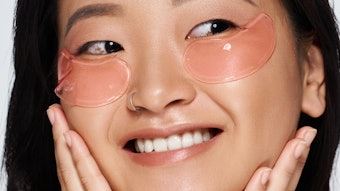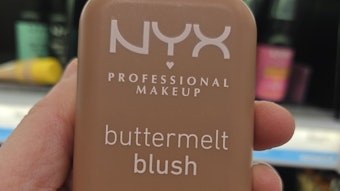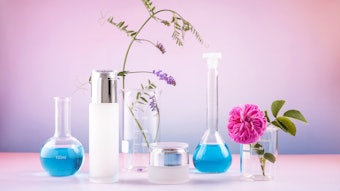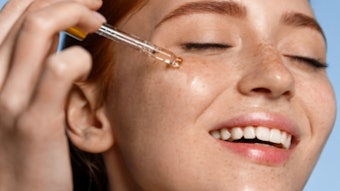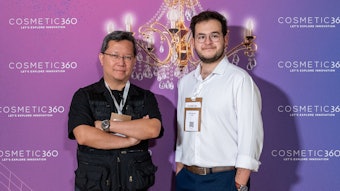Formulating chemists are constantly called upon to use their knowledge and creative instincts to conjure up blends of ingredients to develop functional creams, shampoos, etc. This process is analogous to cooking, which obviously requires chemistry in order to perfect edible creations. This article is the first in a four-part series that will highlight connections between the chemistry of cooking and personal care product development—including the reactions that occur and why, and how to best utilize these reactions for the benefit of novice formulators. The present article considers dairy products, examining the cooking science of eggs and milk. Additional articles will discuss meat and poultry, grains and sugar, and flavors and spices of life.
Log in to view the full article
Formulating chemists are constantly called upon to use their knowledge and creative instincts to conjure up blends of ingredients to develop functional creams, shampoos, etc. This process is analogous to cooking, which obviously requires chemistry in order to perfect edible creations. This article is the first in a four-part series that will highlight connections between the chemistry of cooking and personal care product development—including the reactions that occur and why, and how to best utilize these reactions for the benefit of novice formulators. The present article considers dairy products, examining the cooking science of eggs and milk. Additional articles will discuss meat and poultry, grains and sugar, and flavors and spices of life.
The Science of Egg Whites
Egg white is approximately 15% protein in water and represents about two-thirds of the total egg composition. Various egg white proteins are made of long chains of amino acids1 consisting of a variety of weak chemical bonds and electrical charges that keep globular proteins curled tightly as they float in the surrounding water of the egg composition. When protein is curled, hydrophobic amino acids are packed in the center, away from the water, and hydrophilic amino acids drift on the outside, closer to the water.
When a chef intensely mixes or applies heat to the egg white composition, the placidly drifting egg proteins are agitated. This denaturation process disrupts and can destroy both the secondary and tertiary structures, breaking the weak bonds that originally kept the protein curled. Thus, uncurled egg proteins bump into one another, forming a stable protein network of new chemical bonds that can entrap air bubbles in their place because hydrophilic parts are immersed in water, whereas hydrophobic parts gravitate into the air bubble interface. Heating will both expand the air bubbles and further stabilize the entrapped gas. If the egg whites are properly heated and/or mixed, the newly formed protein network helps to stabilize the structure so the bubbles do not collapse. These bubbles are essential for meringues or soufflés.
For the purpose of this article, a beaten egg white has three useful stages, the first of which is the foamy stage, which typically is reached after a short period of beating. In this stage the bubbles should be large and weak, as the beaten white is a mix of fluid and froth. Should a beater be pulled from the egg white during this stage, the egg white follows and then collapses—i.e., the egg white will not hold a peak. This process correlates similarly to cosmetic chemistry when the formulator neutralizes an associative thickener polymer early during the emulsification and mixing process, to stretch out the polymer and increase the hydrogen bonding potential for a more robust and thicker emulsion.
The second or soft peak stage follows the foamy stage; as one beats the egg white, larger bubbles are divided into smaller bubbles, with foam beginning to appear white and shiny. If the beater were lifted from the foam, the egg white would form a peak for a brief moment then the tip of the peak would fold over because the proteins in the liquid walls of the bubbles have not yet stretched1 to their maximum. Compare this to typical cosmetic emulsions in which a large particle size emulsion has a higher probability of collapsing and coalescing, especially at elevated temperatures. In the case of an associative thickening polymer such as carbomer, this requires some neutralization to unravel the entangled polymer mass.
In the third stage, or stiff peak stage, the foam volume has reached its maximum because proteins cannot be stretched any further. Should the foam be sliced with a knife, a narrow groove with stiff peaks would form. At this point, the chef should stop beating because further beating would reduce the particle size of the emulsion with an insufficient amount of protein emulsifier available to cover the increasing surface area. Continuing to beat the mixture would shift it into a dry foam stage, during which proteins break up and the foam is no longer moist or shiny. Generally, formulators do not want to introduce air into emulsions, except perhaps in the case of a shaving cream or mousse, because the air will destabilize the emulsion and cause filling problems.
Additional considerations when beating egg whites include:
1. Older eggs whip more easily because of the gradual uncurling rearrangement of the egg proteins during aging.
2. A pinch of salt in the egg white prior to whipping helps firm up the proteins because it allows the hydrophilic portion of the protein to more easily stretch out into the water. This is much like adding an electrolyte to the water of a cosmetic emulsion to stretch a hydrophilic PEG component of a high HLB co-emulsifier.
3. Adding a small amount of acid to the forming foam approximately one quarter through the beating process creates a more positively charged protein so that it can react more effectively with other proteins, stabilizing the proteins and helping to keep the bubbles from bursting when beating has stopped. Typical acids to use are cream of tartar, lemon juice or vinegar. In cosmetic formulating, sometimes a base or acid must be added to convert an acid to a base (associative thickener), or a base or neutral molecule to an acid (conversion of zwitterions to cationic); the ionic state of a molecule is important to form a stable emulsion or a more substantive molecule.
4. Copper or aluminum added to egg whites guarantees improved moistness, stiffness and retention of the slightly golden color of egg whites. One of the known proteins in egg whites is conalbumin, which, when fully stretched across the foam bubbles of a freshly beaten egg white, tends to fall apart. However, tiny amounts of copper can be combined with conalbumin to strengthen it. The combination of copper and conalbumin is slightly yellow, giving the whipped egg whites a slightly golden color. An opposing example in personal care would be the need to add a chelating agent in some formulas to tie up any trace metals that could negatively affect a fragrance, cause odor over time, or destabilize a surfactant system.
5. Adding sugar to the egg whites toward the beginning of the whipping process could double the time of whipping because sugar molecules obstruct the uncurling of the egg proteins, increasing the time it takes for proteins to form new bonds.
6. Ensure none of the yolk ends up in the egg whites when separating them because fat from the egg yolk interferes with the formation of good foam.
The Science of Milk
Milk is a complex colloidal dispersion of water, milk-fat globules (lipids), proteins (i.e., casein and whey) and solid nonfat in an aqueous solution.2 How these individual components are utilized affects the types of products produced. Since milk is initially unstable, homogenization is the principal method for achieving stabilization in the milk fat. Fat destabilization refers to the clustering and clumping of fat globules, which leads to the development of a continuous internal fat network or matrix structure. This matrix is necessary for structure formation in butter, whipping cream, ice cream, cheese and other products.
Fat destabilization or agglomeration is the general term that describes the summation of different phenomena such as:
Coalescence: an irreversible increase in the size of fat globules and a loss of identity of the coalescing globules.
Flocculation: with minor energy input, a reversible agglomeration or clustering of fat globules with no loss of identity to the globules in the floc; fat globules that flocculate can be easily re-dispersed if they are held together by weak forces; on the other hand, they can become more difficult to re-disperse since they share part of their interfacial layers.
Partial coalescence: an irreversible agglomeration/clustering of fat globules held together by a combination of fat crystals and liquid fat.
Heavy cream is a w/o emulsion with a fat content of 35–40%, represented as liquid and crystalline structures.3 When one whips a bowl of heavy cream, the agitation and added air bubbles cause fat globules to coalesce in chains and clusters, and adsorb into and spread around the air-water interface bubble. As the fat continues to coalesce, it causes one fat-stabilized air bubble to be linked to the next, and so on, eventually forming a three-dimensional network. The whipped cream soon becomes stiff and dry in appearance and takes on a smooth texture as the fat structure stabilizes. The crystalline fat content is essential; hence, whipping of the cream is temperature-dependent so that the fat globules partially coalesce, sticking together in chains and clustering as a three-dimensional structure rather than fully coalescing into larger and larger globules that are not capable of structure-building.
This process is like the development of liquid crystalline matrices in personal care emulsions; for instance, to add body and apparent viscosity to a lotion, while also making it easily spreadable.
A cationic emulsifier with high molecular weight fatty alcohol is a good example of structure-building. It is always important to understand the amount of shear applied to the formulation during cooling and filling so that the liquid crystal matrix is undisturbed and maintains the ability to reform with time.
As whipped cream is whipped further, the fat in it will begin to churn and butter will eventually form. Butter is essentially the fat of the milk.
A w/o emulsion, butter is comprised of > 80% milk fat, water in the form of tiny droplets, and some milk solid nonfat. Additionally butter can be made from acidulated or bacteriologically soured cream. Butter’s texture results from the kneading of cream. Depending upon the temperature during this process, the fat crystalline network that forms may have a hard or smooth texture. Cream that is folded at a higher temperature results in a stiffer texture, whereas cream kneaded at a lower temperature results in a creamier texture—this is not dissimilar to cosmetic emulsions that employ solid fatty alcohols to build a liquid crystalline matrix, adding body and stiffness to the emulsion.
Once formed, butter can be clarified by melting it and removing the unmelted milk solids. Removal of the protein-rich solids allows for cooking with clarified butter at higher temperatures without burning or the loss of the butter flavor.
In addition to whipped cream and butter, ice cream is made from milk. When milk is subjected to the whipping action of a barrel freezer, its emulsified fat begins to partially break down and fat globules begin to flocculate or destabilize. The air bubbles beaten into the mix are stabilized (entrapped) by this partially coalesced fat. Thus, ice cream is both an emulsion and foam. As a result of this homogenization, milk fat is reduced to tiny fat globules. If emulsifiers were not added at this stage, the fat globules would resist coalescing since the proteins are adsorbed into the fat globules; the air bubbles would not be properly stabilized and the ice cream would not exhibit a smooth texture.
Cheese, another form of milk, is simply milk acidified with acetic acid or vinegar that is ripened by the process of bacterial culture fermentation and the addition of enzymes, which then coagulates to form solid curds and liquid whey. Enzyme-curdled cheeses have a gel-like protein matrix that can be broken down by heat. If enough protein bonds are broken, the cheese changes from a solid to a viscous liquid. Depending on the source of the milk and the process conditions, cheese can be produced that melts at different temperatures. For example, soft, high-moisture cheeses will melt at lower temperatures than hard, low-moisture cheeses. Other milk products include yogurt and cream cheese. Yogurt is produced by the bacterial fermentation of milk. The fermentation of lactose produces lactic acid, which reacts with milk protein, giving yogurt its texture and characteristic tang. Cream cheese is produced by adding lactic acid bacteria to pasteurized and homogenized milk to convert the surface negative charge of the amino acid milk proteins to a neutral state, in turn shifting the fat micelles from hydrophilic to hydrophobic and causing the liquid to coagulate. The fermentation process is stopped by heating to 52°C–63°C to kill the bacteria at the moment the cheese is at its isoelectric point—the state at which half the ionizable surface amino acids of the proteins are positively charged and the other half are negatively charged. This adjustment is similar to the formulator making pH adjustments of cationic hair conditioners so they develop a positive charge and better adhere to hair, especially in damaged hair that is anionically charged.
Conclusions
Milk and eggs are not all that different from the raw materials used today to make creams, lotions, shampoos, conditioners, etc. They are natural ingredients that contain lipids and proteins—hydrophilic and hydrophobic components. To convert such materials to edible delicacies, one simply needs to understand their chemistry and how their molecules can be converted to a state that works for the recipe being prepared. This is no different than the cosmetic formulator preparing an emulsion and understanding the chemistry of each raw material involved, how each interacts with other molecules present, and how to put them together in the right order and process conditions. The parallel thinking is similar to converting a skin care shave lotion to a good whipped cream.
References
1. Food and Agriculture Organization of the United Nations, The amino acid content of foods and biological data on proteins, Nutritional Study #24, Rome, Lanham, Md., USA: UNIPUB Inc. (1970)
2. US Department of Agriculture, Agricultural Research Service, USDA Nutrient Database for Standard Reference, Release 12, Nutrient Data Laboratory, available at: www.ars.usda.gov/main/main.htm (Accessed Jan 28, 2009)
3. Whipped Cream Structure, University of Guelph Web site, available at: www.foodsci.uoguelph.ca/dairyedu/whcream.html (Accessed Jan 28, 2009)

!['Snoopy and Woodstock are cherished [characters] across generations and pairing them with our most-loved body care essentials creates a collection that feels classic with a modern twist. This launch is about celebrating our community with something unforgettable while starting an exciting new era for the brand,' said Luis Garcia, Chief Marketing Officer.](https://img.cosmeticsandtoiletries.com/mindful/allured/workspaces/default/uploads/2025/10/tree-hut-peanuts-fullcollection-fall26-1x1-1253.lGcuurUszp.jpg?auto=format%2Ccompress&fit=crop&h=191&q=70&w=340)
